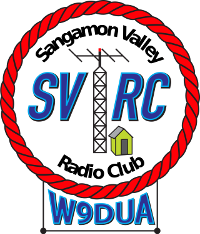A Piece of History Motivates Ham Who Built His Own Enigma Machine
In a special salute to the fast approaching Veterans Day, on Thursday, November 2, the Sangamon Valley Radio Club will take a look back at what historians say was a turning point for communications in World War II, one that led to the Allied victory. The program begins at 7 p.m. at club hqs in Springfield.
SVRC member John Swartz, WA9AQN, will detail his research on the complex Enigma machine used by Nazi German to send coded radio messages during the war, bringing with him an electronic version of the machine he built from a kit.
In 1942, British mathematician Alan Turing--working at Bletchley Park, a top secret military code encryption center southeast of London-- cracked the electro-mechanical machine's system, enabling the Allies to read the Enigma messages. His role in the war effort was the subject of the 2014 Oscar-nominated film, The Imitation Game.
In addition to developing the electro-mechanical “bombe” that found settings for the German Enigma key, Turing also wrote the theoretical description of a programmable digital computer before any had been built, and formalized the concept of the algorithm—vital steps toward the modern computer.
Swartz, a retired attorney and a ham radio operator for 56 years, became intrigued with the story of the Enigma machine after reading F.W. Winterbotham's book The Ultra Machine, published in 1974. Ultra was the designation used by the Allies for signals obtained by breaking the high level radio and teleprinter communications using the Enigma machine. Turing died in 1954
In visiting Great Britain in 1992, his continued interest in the Enigma inspired a side trip to a museum at the then decaying Bletchley Park site. "I wanted to see where they had done all the decoding. At the time, Bletchley Park not been restored and was in a desperate state of disrepair," Swartz recalls. His visit led to an invitation to attend a conference at Oxford University where many of the code-breakers who worked at Bletchley Park were guest speakers.
"I thought if I didn't go to that conference, it was possible that (because of their advanced age) most if not all the presenters would be dead within a year or so and there would never be another opportunity to see or hear them."
The hit movie, though hitting the theme, was short on accuracy, Swartz adds, but had a positive effect on both making Turing a household name and inspiring the British government to pour millions into restoring and preserving Bletchley Park as a museum and tourist attraction.
The American Red Cross Building, 3rd floor at 1045 Outer Park Dr. Springfield 11/02/2017 8:00pm America/Chicago publicA Piece of History Motivates Ham Who Built His Own Enigma Machine
In a special salute to the fast approaching Veterans Day, on Thursday, November 2, the Sangamon Valley Radio Club will take a look back at what historians say was a turning point for communications in World War II, one that led to the Allied victory. The program begins at 7 p.m. at club hqs in Springfield.
SVRC member John Swartz, WA9AQN, will detail his research on the complex Enigma machine used by Nazi German to send coded radio messages during the war, bringing with him an electronic version of the machine he built from a kit.
In 1942, British mathematician Alan Turing--working at Bletchley Park, a top secret military code encryption center southeast of London-- cracked the electro-mechanical machine's system, enabling the Allies to read the Enigma messages. His role in the war effort was the subject of the 2014 Oscar-nominated film, The Imitation Game.
In addition to developing the electro-mechanical “bombe” that found settings for the German Enigma key, Turing also wrote the theoretical description of a programmable digital computer before any had been built, and formalized the concept of the algorithm—vital steps toward the modern computer.
Swartz, a retired attorney and a ham radio operator for 56 years, became intrigued with the story of the Enigma machine after reading F.W. Winterbotham's book The Ultra Machine, published in 1974. Ultra was the designation used by the Allies for signals obtained by breaking the high level radio and teleprinter communications using the Enigma machine. Turing died in 1954
In visiting Great Britain in 1992, his continued interest in the Enigma inspired a side trip to a museum at the then decaying Bletchley Park site. "I wanted to see where they had done all the decoding. At the time, Bletchley Park not been restored and was in a desperate state of disrepair," Swartz recalls. His visit led to an invitation to attend a conference at Oxford University where many of the code-breakers who worked at Bletchley Park were guest speakers.
"I thought if I didn't go to that conference, it was possible that (because of their advanced age) most if not all the presenters would be dead within a year or so and there would never be another opportunity to see or hear them."
The hit movie, though hitting the theme, was short on accuracy, Swartz adds, but had a positive effect on both making Turing a household name and inspiring the British government to pour millions into restoring and preserving Bletchley Park as a museum and tourist attraction.
